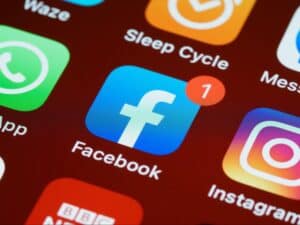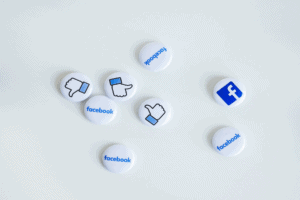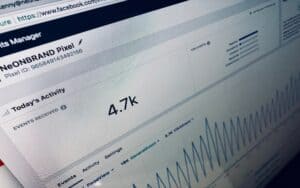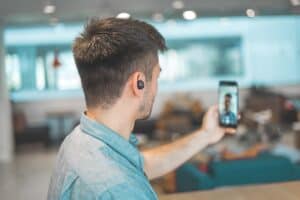Facebook is the largest social media network on the planet. Brands love it because it enables them to connect with a truly global audience. The advertising tools that it offers are also among the best in the business.

It goes without saying that any business that’s trying to generate sales online will devote a big chunk of its time and resources trying to crack Facebook marketing. That might sound easy but the reality is completely different.
Facebook ads have steadily become expensive over the years. The average CPM is now close to $11. There are a variety of factors that have contributed to it. Oversaturation of the Facebook marketplace is one of them. Too many advertisers are paying to capture the attention of the same people which is pushing costs higher for everyone.
On the other hand, the organic reach has steadily declined on Facebook over the years. Brands can’t really reach people at scale unless they pay for it. Those who truly understand Facebook reach and take steps to maximize it organically end up saving a lot of money in the process.
What is Facebook Reach?

Reach is a key metric on Facebook. The social network itself defines Reach as the number of unique users that saw any content from your Facebook Page or about your Page on their device.
For example, if you like a Page, you might see a post from it in your News Feed, where you might also see suggested posts by the algorithm from a Page that you haven’t liked. Simply put, reach is a metric that adds up all of the Facebook users that saw your brand on the social network.
There are three reporting windows for Facebook reach: 1-day, 7-day and 28-day. The way numbers are reported can often end up confusing people. The reporting increment you choose will dictate what your reach looks like.
Imagine if a user saw your content multiple times over two days. They would only be counted once on each individual day if you view reach in the 1-day reporting window. However, the same user would be counted only once in the 7-day and 28-day windows no matter how many times they came across your content.
This is merely a way to represent the same performance in a different way depending on the timespan to allow for more in-depth analysis.
The three types of Facebook reach you should know about

Organic: They say that the best things in life are free. So is the organic reach on Facebook. This includes users who like your page, interact with your content and those that see mentions of your page in their News Feed.
Viral: Going viral online for the right reasons is the dream for every brand. It provides them with an immense amount of reach at no cost. Viral reach includes Facebook users that see your content because of a third person, like their own friends who share your posts.
Paid: Lastly, paid reach is what you pay Facebook for. Use its tools to fine tune your campaigns, target the right audiences and wait for Facebook’s algorithm to do its thing. As previously mentioned, paid reach has gradually become more expensive.
The number of people who like your Facebook page isn’t your organic reach. Even if you have a million likes, only a very small fraction will serve your posts. Consider these numbers: By the end of 2020, the average reach for an organic Facebook post dropped to 5.2%. The average engagement rate is at 0.25%.
That number drops further to 0.08% for those with over 100K followers. Facebook has made it abundantly clear that organic reach alone isn’t going to help brands achieve their objectives on the social network. They need to pay up.
There’s no need to lose all hope in organic reach just yet. By switching up a few things, it’s entirely possible to quickly grow your Facebook organic reach. This will enable you to better leverage the existing audience that has already been amassed through the Page.
Better organic reach also means that you need to spend less on Facebook advertising as you’d be able to get your message out more effectively to the people who already know about your brand and are known to engage with it.
Steps to quickly grow your Facebook reach

Post when most of your followers are online
Recency is a big ranking factor that Facebook’s algorithm considers when deciding which posts to show users. It places new posts higher up in the News Feed. Facebook itself stresses that by posting when most of your followers are online, you have a greater chance of increasing your organic reach.
So dive deep into the audience metrics for your Facebook Page. See when most of your followers are online. Use the Post scheduling tool that Facebook provides to have new content lined up to publish at just the right moment.
Engage with your audience
Your Facebook page shouldn’t look like a link farm. Take time out to engage directly with the people who are interacting with your posts. Facebook’s algorithm considers interactions between users and Pages as a signal.
The more a user interacts, the more often they see posts from that Page. The best way to do that is to reply to users either in the comments or through Messenger. Keep them engaged and Facebook will keep serving them your posts.
Leverage the algorithm’s love for live video
Facebook’s algorithm really loves live video. The social network has been increasingly giving it more importance. Brands that use Facebook Live tend to see 6x more engagement compared to regular video posts.
Not only does it provide brands with a unique way of reaching out to their community, but it also helps them extract the best reach out of the algorithm.
Don’t give up on Facebook organic reach just yet
It’s easy to feel disheartened and think that unless you’re spending thousands of dollars on Facebook, it’s really not possible to get any traction on the social network. There are countless examples of brands who utilize these steps to elevate themselves on the world’s top social network.
This does require some trial and error. As long as you’re putting in the work and leveraging every tool that Facebook provides to improve your organic reach, it won’t be long before you start seeing some real results.
